Flanders (Middle-Ages) – Nova antiquae Flandriae geographica tabula…
by
Nicasius Fabius
Rare map of Flanders in the Middle-Ages
Detail
Date of this map: 1641
Dimensions (without margins): 33 x 44 cm
Dimensions (with margins): 45 x 50,5 cm
Condition: Very good. Sharp copper engraving. Centre fold as published.
Condition rating: A+
Verso: blank
Price (without VAT, possibly to be added): €1 250,00 (FYI +/- $1 387,50 / £1 112,50)
Unless otherwise specifically stated on this map page, we charge the following expedition costs in euro (unfortunatelly, gone up with Covid, but still too low in reality!):
– Benelux: 40 euro
– Rest of Europe: 60 euro
– Rest of the World: 100 euro
In stock



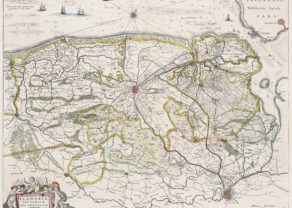
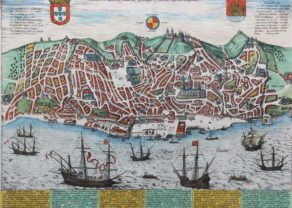
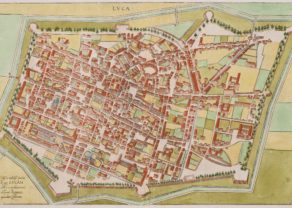
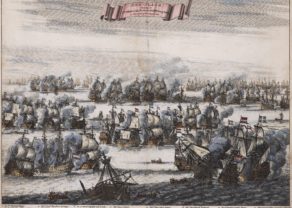
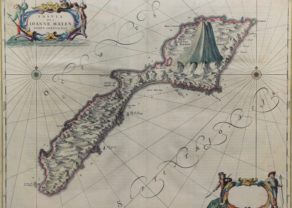
The genesis of Flanders in the Middle-Ages
The County of Flanders is first recorded for 862, then as part of the West Frankish Kingdom (of France), to which it belonged until 1495. In the course of the Middle Ages the Counts of Flanders acquired territory beyond the French border, in the Holy Roman Empire. This rare map shows major tribes (such as Menapii, Morini and Atrebates). Many locations are familiar. Moreover, and exceptionally, the map gives the major roads.
The interesting point lies in its title and the story behind. The full title of the map is “Nova antiquae Flandriae geographica tabula, qualis sub Balduino Ferreo et Juditha, primis eiusdem provinciae comitibus, fuit”. It hides the genesis of the county.
Judith was the daughter of Charles the Bald (reigned 840 – 877), one of the 9th-century kings of West Francia (843–877), king of Italy (875–877) and emperor of the Carolingian Empire (875–877).
Twice widowed by kings of Wessex, Judith eloped in 660 with Baldwin, count of several pagi of Flanders. King Charles proclaimed that Judith was a “stolen widow”. Presumably, Charles may have intended to arrange another marriage for his daughter. However, around Christmas 861, Judith eloped with Baldwin, later Count of Flanders. The two were likely married unofficially in the Flemish city of Harelbeke at this time. Unsurprisingly, Judith’s father was furious and ordered his bishops to excommunicate the couple. They later fled to the court of Judith’s cousin Lothar II of Lotharingia for protection, before going to Pope Nicholas I to plead their case. The Pope took diplomatic action and asked Judith’s father to accept the union as legally binding and welcome the young couple into his circle—which ultimately he did. The couple then returned to France and were officially married at Auxerre on 13 December 862.
Baldwin was given the land directly south of the Scheldt, i.e. the Country of Flanders (albeit an area of smaller size than the county which existed in the High Middle Ages) to ward off Viking attacks. It is disputed among historians as to whether King Charles did this in the hope that Baldwin would be killed in the ensuing battles with the Vikings; however, Baldwin managed the situation remarkably well. He succeeded in quelling the Viking threat, expanded both his army and his territory quickly, and became a faithful supporter of King Charles. The March of Baldwin came to be known as the County of Flanders and would come to be one of the most powerful principalities of France.
Nicasius Fabius
Nicasius Fabius was a canon of the cathedral of Tournai and famed as a local antiquarian. His map portrays the beginnings of medieval county of Flanders.
Aubertus Miraeus
The map is dedicated to Aubertus Miraeus (30 November 1573 – 19 October 1640), an ecclesiastical historian in the Spanish Netherlands. See second picture. After studying at Douai and Leuven he was made canon of the Antwerp cathedral in 1608 and secretary to his uncle, Joannes Miraeus, who was then Bishop of Antwerp. In 1611 he was appointed almoner and librarian to Archduke Albert of Austria, then sovereign of the Netherlands, and in 1624 he became dean of the Antwerp cathedral and vicar general of the diocese. He remained in Antwerp until his death. He wrote numerous works in the fields of history, ecclesiastical history, and related disciplines. Some have suggested that his works lack thoroughness and accuracy.